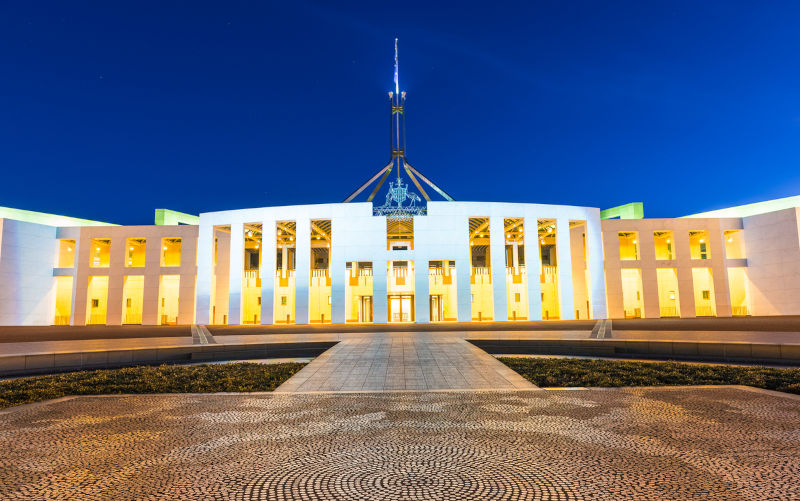Politicians, media commentators and academics routinely assert that Australia is a middle power. They assume that while their country is not a great power, it has a loftier status than smaller states around the globe, enabling it to “speak louder than the latter and to exert some influence on the former”, as John Campbell once put it. In fact, Australia’s middle power imagining is delusional. This has always been the case, but Trump 2.0 is presenting Australia with a wake-up call about its middle power delusion.
Middle power is one of the hollowest concepts in International Relations theorising. It is an attempt by its promoters to add lustre to their country’s standing in international politics. A confusion of criteria is used to rationalise their claims to middle power status: economic size, military capability, influence in regional and global forums, cultural sophistication, membership of regional associations (e.g., the EU), capacity to be a “global citizen” (e.g., Norway’s honourable opposition to the use of landmines). The problem is that most of these claims are unconvincing. Middle power imagining means whatever its proponents want it to mean.
Australia’s assertion of middle power status is wholly founded on its alleged special alliance with the United States – an alliance based on so-called “shared values”. Since 1942, Australian governments have closely aligned the country’s security interests with America’s, including fighting in all of its wars, in the misguided belief that Uncle Sam will come to the country’s salvation if China, or another regional power (Indonesia?), or a global power (Russia?) decides to threaten our security. This puts Australia squarely in the dependent middle power category of ersatz middle powers.
Dependent middle powers are the lowliest of all the so-called middle powers. Their status is inherently vulnerable in the face of the whims of the great power to which they are allied. In his book The Tragedy of Great Power Politics, America’s most ruthless realist John Mearsheimer, made it crystal clear that all alliances between great powers (such as the US) and their dependent middle power underlings (such as Australia) are “marriages of convenience”. When the marriage becomes inconvenient for the great power, divorce follows as surely as night follows day.
Given the chaotic transformations of the US Government ramping up under Trump, Australia faces crises on two immediate fronts.
First, there are uncertainties arising from Trump’s threatened tariffs on Australian aluminium and steel exports to the US. Maybe he will carry through on his threats, or maybe he won’t. Despite the trade imbalance between the two economies (lest Trump forgets, the imbalance is in America’s favour), we have no idea about how far, or for how long, tariffs may be applied to any, or all, of Australian exports into America. One thing is certain, if we displease the thin-skinned Donald, or offend any of his eccentric acolytes, revenge will be swift and nasty.
Trump is making it plain that Australia’s alliance with the US exists only insofar as he assesses that it is in America’s transactional interests. It is not a mutual admiration arrangement. It is possible there will come a time when Trump (hence America) won’t care about Australia at all. This means that Canberra’s timorous commitment to the ridiculous AUKUS agreement, for example, becomes ever more quixotic as Trump and his team up-end old alliances and the global order.
To deal with the first crisis, Australia’s response to China’s imposition of tariffs on Australian exports (caused, remember, by the diplomatic ineptitude of the Morrison Government) should be a model for moving our exports away from America to other markets in our region. Simultaneously, a comprehensively new trade agreement with China (our largest export market) should now be actively explored in Australian policy-making circles. This will require very astute diplomacy.
The potential of Indonesia as a trade and investment partner to Australia remains senselessly under-explored in the country’s boardrooms, banks and political circles, even though the possibilities are considerable. Meanwhile, efforts to increase economic ties with India (particularly in the area of education) need a far more intelligent approach than has been the case so far. An upgraded trade agreement and security agreement with the European Union should also be high on Australia’s diplomatic agenda.
There is a second concern about Trump 2.0’s foreign policy. In the event of a war breaking out between the US and China, Australia would present itself as a useful “hostage target” for the Chinese. Hostage targets are specific areas in smaller states in a dependent alliance with a great power. There are several US military bases in Australia, the most important being the ominous communications and spy installation at Pine Gap near Alice Springs. All of the US bases in Australia are potential hostage targets in the event of a US war against China. And because they would be regarded as “hostage targets”, the possibility that nuclear missiles could be deployed by the Chinese to wipe out those strategic targets cannot be ruled out.
What can be done?
A comprehensive reassessment of Australia’s self-image as a middle power is way overdue. As a dependent, hence fake, middle power, Australia assumes that America is a reliable alliance partner fully committed to our security in the Asia-Pacific. Under Trump, it is no longer a viable security pathway for Australia to be taking. To persist with it — as our guileless Defence Minister Richard Marles does — is evidence of a vainglorious view of Australia’s position, in its region and in the world. Australia is not a middle power of any substance. It is an unctuous groveller to America, an awkward partner in Southeast Asia, and an arrogant “big brother” in the South Pacific.
It’s time for our more innovative scholars and commentators to forge new ways of thinking about the country in these dangerous times. Initially, this will mean a root and branch upgrading of relations between Australia and its geopolitical partners in East and Southeast Asia and the South Pacific, requiring sophisticated diplomats who are fluent in local languages and at home in non-Western cultures. It will require politicians and business leaders with similar capabilities, enabling them to engage closely with their Asian counterparts. It will require negotiating joint Australian and Asian agreements to develop high-tech industries, hospitals, schools and higher education institutions.
The time for enmeshing with Asia (to borrow Bob Hawke’s words) has come.
Dr Allan Patience is an honorary fellow in political science in the University of Melbourne.

